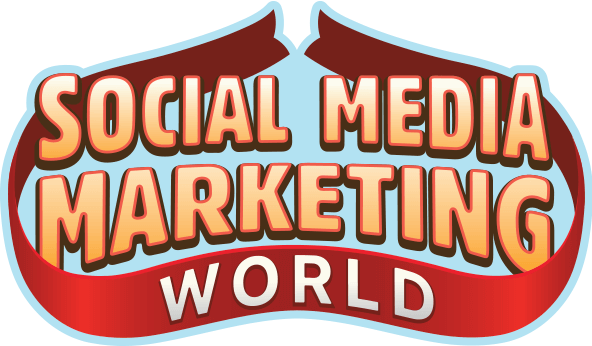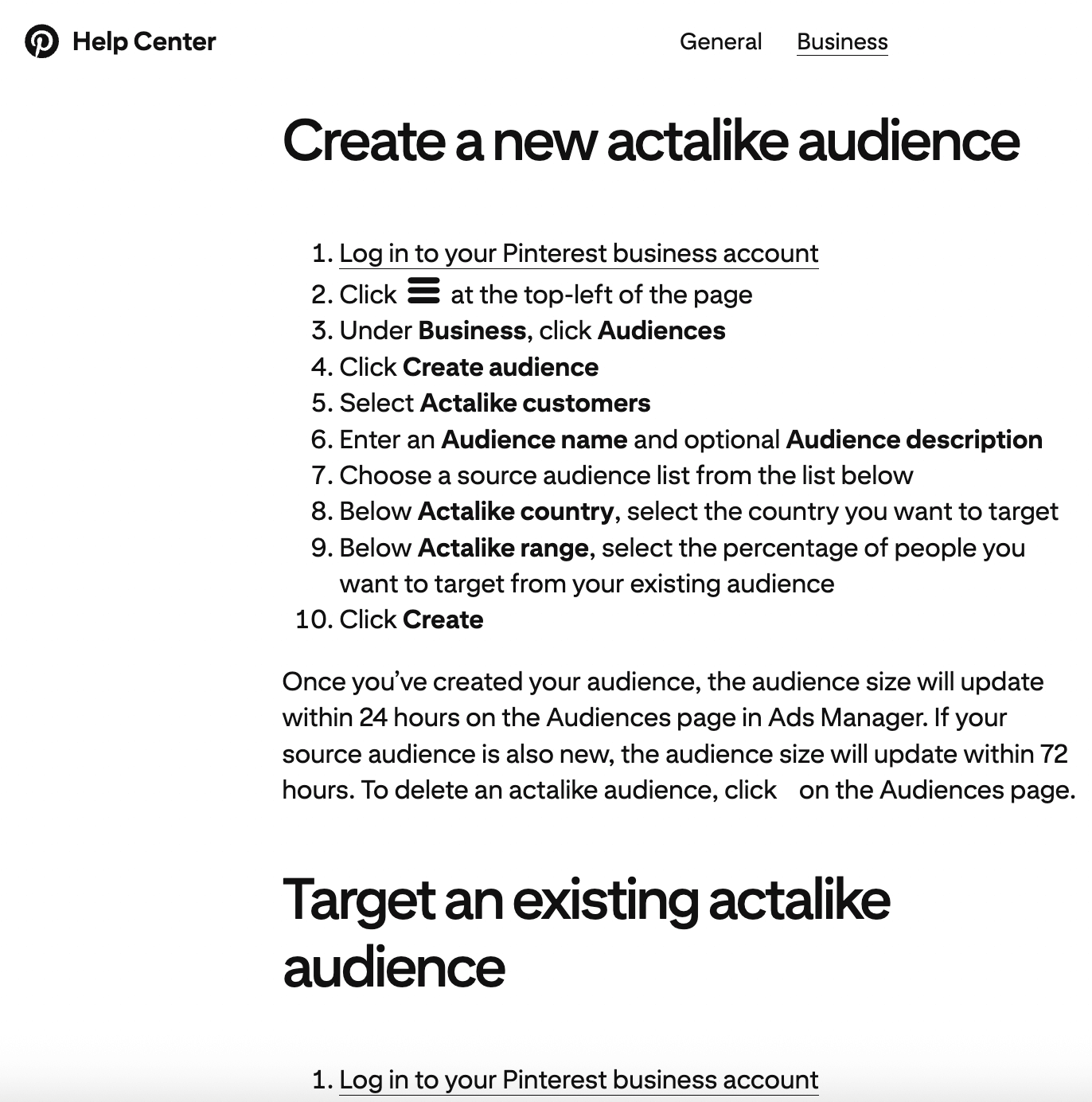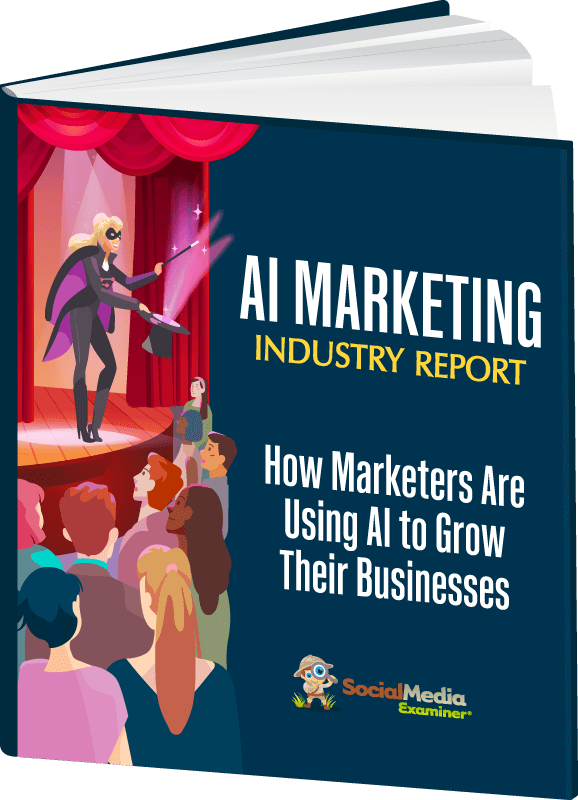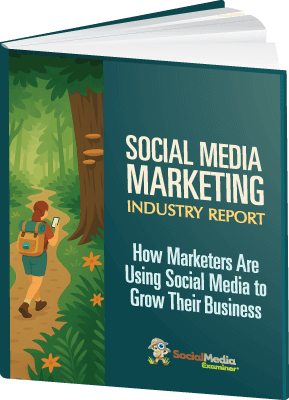Want to tap into an overlooked advertising platform that delivers strong results? Wondering how to leverage Pinterest ads to reach new customers and scale your revenue?
In this article, you'll discover how to create and optimize Pinterest ad campaigns that convert
Why Marketers Should Consider Pinterest Ads
Pinterest offers a significant opportunity that most marketers miss. While advertising agencies focus their budgets on Meta, YouTube, TikTok, and other platforms, they overlook a platform with five hundred million monthly active users.
“It's a little bit of a missed opportunity for most marketers because most paid advertising agencies are spending their budget on those other platforms like Meta, YouTube, all those places,” explains Karen Nelson, a paid media expert who helps coaches and course creators grow their revenue with Facebook, Instagram, and Pinterest ads. Nelson spent nearly a decade in digital marketing after transitioning from elementary school teaching. She started her own agency after discovering Pinterest's effectiveness for content distribution.
When your target customers use Pinterest, ignoring the platform means missing potential sales. Pinterest has less competition than other advertising platforms, which means advertisers often achieve better results. This lower competition allows your advertising budget to work harder and reach more people than on crowded platforms.
Pinterest content lasts much longer than content on other social platforms. Your advertising investment continues working because Pinterest content stays visible for extended periods. Organic content and paid ads on Pinterest remain active for at least three months. This differs greatly from Instagram and Facebook posts, which typically receive engagement for about an hour. TikTok videos and Instagram reels might stay visible for twenty-four to forty-eight hours before engagement decreases. Pinterest content continues getting views and engagement for three, six, or twelve months, and sometimes for years.
The platform attracts users across all age groups, including significant growth among Generation Z users. Young adults use Pinterest for inspiration and planning, while older demographics remain highly engaged. This diverse user base makes Pinterest valuable for businesses that serve multiple age groups.
Understanding Pinterest as a Search Engine, Not Social Media
Pinterest works differently from traditional social media platforms. Rather than functioning as a social network, Pinterest operates as a visual search engine where people look for ideas and solutions.
“I like to call Pinterest a partner platform,” Nelson explains. “And the reason I call it that is because one of the things about Pinterest is you really want to send people away from Pinterest. On Instagram, TikTok, those platforms, they want you to stay there. They want you to keep consuming. But Pinterest wants you to click and then go somewhere else to get the information you're looking for.”
This difference changes how you approach Pinterest advertising. Pinterest users arrive with specific goals in mind. They search for solutions, products, and inspiration for real projects. These users plan weddings, renovate homes, organize events, and search for products that solve problems. This intent means Pinterest users often stand closer to making a purchase than people browsing social media for entertainment.
Pinterest includes visual search features that other platforms lack. The technology lets users search with images instead of only keywords. Someone can photograph an item they like, and Pinterest will display similar products. This feature helps advertisers, especially those selling visual products and services that appeal to consumers.
Pinterest users think differently from social media users. They don't come to Pinterest to connect with friends or watch entertaining videos. Instead, they search for solutions and gather ideas. These users actively plan projects, which makes them ready to discover products and services that help them reach their goals.
Content on Pinterest lasts much longer than on social platforms because of its search engine structure. When someone searches for “bathroom renovation ideas,” they might find pins created months or years earlier. This lasting quality means your advertising investment keeps working long after your campaign ends.
#1: How to Choose the Right Offer for Pinterest
Pinterest ads works best when you start with the right offer that matches the platform's users and their behavior. Not every product or service succeeds on Pinterest, so understanding what works helps you invest wisely.
Ready to Supercharge Your Marketing Strategy?

Get expert training and an unbeatable conference experience when you attend Social Media Marketing World—from your friends at Social Media Examiner.
Broaden your reach, skyrocket your engagement, and grow your sales. Become the marketing hero your company or clients need!
🔥 Save $850 on an All-Access ticket. Sale Ends Wednesday! 🔥
GET THE DETAILS“It has to be an offer that you know converts already,” Nelson emphasizes. “So you don't want to test out a brand new offer on Pinterest. That is something that you should be doing through organic content on whatever platform you're already using.”
Your offer needs three key components for Pinterest success. First, bring an offer that already works well through other channels. Pinterest isn't the right place to test unproven ideas. Use offers that you know connect with your target audience. Second, create a clear path from Pinterest to purchase. Users should move smoothly from seeing your pin to buying your product, without confusing steps or barriers. Third, ensure your offer appeals to Pinterest's users and their interests.
Certain categories perform especially well on Pinterest. Home decor, gardening, recipes, fashion, beauty, weddings, events, DIY projects, and educational content all attract strong engagement. If your business fits these categories or can create content for these interests, you'll likely see better results with Pinterest advertising.
Nelson shares a success story about an interior designer client who achieved excellent results on Pinterest. “We work with an interior designer, and she does virtual services where people send her the dimensions of the room and pictures, and she creates a design board for them. People on Pinterest lose their minds about this stuff. She can't onboard clients fast enough when we run Pinterest ads. And so that's the kind of stuff where if you're an interior designer, if you're a home organizer, those people need to be on Pinterest running ads because their clients are there and they're looking for that help.”
The key involves matching your offer to how Pinterest users think. Pinterest users plan and dream while actively seeking ways to improve their lives, homes, and experiences. They don't just browse—they collect ideas and make decisions about future purchases. Your offer should connect with this planning mindset by providing clear value that helps them achieve their goals.
Products and services for consumers typically perform better than business offerings on Pinterest. While exceptions exist, Pinterest users primarily look for personal projects and purchases rather than business solutions. Business-to-business companies can still succeed on Pinterest, but they should consider how their products might appeal to individuals for personal use.
#2: How to Create Pinterest Ad Assets That Convert
Pinterest requires specific types of visual content to capture attention and drive results. Your ads must stand out while providing value and maintaining the authentic style Pinterest users expect.
Pinterest provides several ad formats for your campaigns. Image ads remain the foundation of Pinterest advertising, though the platform now offers more options. Carousel ads let you display multiple products or tell a story across several images. Video pins, especially short videos, have gained importance as users embrace video content. Collection ads combine a main image or video with smaller images below. Shopping ads connect directly with your product catalog for seamless purchasing.
“Really, the type of content that I find performs best as an ad on Pinterest is that short-form video,” Nelson reveals. “Nine to fifteen seconds tends to be really good, vertical, of course. And you can repurpose your best Instagram reels. I mean, this is like the dreamland for people who are creating Instagram reels, because you can repurpose them as idea pins or video pins on Pinterest and then put ad spend behind them.”

The size and format of your creative assets matter on Pinterest. Static images work best at a 2:3 aspect ratio, which means 1000 pixels wide by 1500 pixels tall. This vertical format fills more screen space on mobile devices, where most people use Pinterest. Videos should maintain the same 2:3 ratio when possible, though square videos also work. Keep videos short—nine to fifteen seconds works best for maintaining attention while delivering your message.
Several visual elements perform particularly well on Pinterest. Use bright, high-quality images that stand out in feeds. Add text overlays that are large enough to read on phones. Show the end result or transformation your product provides. Create step-by-step images or videos that demonstrate processes. Include before-and-after transformations to show value clearly.
Nelson provides specific advice for different industries. “For home and garden and DIY related things, stop motion works super well. Or for food and recipe-related things, which is why so many people on Pinterest, stop motion can work really well. Just that bird's eye view, the camera pointed straight down at your counter while you take things in and out and build something, whether that's a DIY project or a recipe. People love that on Pinterest for an ad. Put ad spend behind content like that, and as long as you have that call to action either on the pin or immediately when they click-through, it does really well.”
You can successfully repurpose content from other platforms with some adjustments. When bringing Instagram reels to Pinterest, adjust the aspect ratio to fit Pinterest's format. Remove Instagram-specific language or calls to action. Add text overlays that work for Pinterest if your original video lacks them. Keep your branding consistent while adapting to Pinterest's style.
Creating attention-grabbing hooks on Pinterest requires both visual and text strategies. Visual hooks include unexpected color combinations, movement in video opening frames, faces looking directly at viewers, or dramatic transformation reveals. Text hooks should ask questions Pinterest users want answered, promise specific solutions, use numbers to suggest concrete tips, or create curiosity that encourages clicks.
#3: How to Write Pinterest Ad Copy That Drives Action
Although Pinterest focuses on visual content, your written copy plays an important role in converting viewers into customers. Pinterest users read and process copy differently than on other platforms.
“You want to capture attention in the first sentence,” Nelson emphasizes. “Your pin title is like the headline. Your Pinterest title is the headline that you need to really think about because when you're scrolling through, even as a smaller pin, you can see what the Pinterest title is. Then you have your description, which is that when someone clicks through to the closer look view on mobile or on desktop, they can see the whole thing. But you want to capture attention in that first sentence because that might be all they can see initially.”
Your pin title serves as your main hook and should work for both search and advertising. Since Pinterest users often find content through search, your title needs relevant keywords while being interesting enough to earn clicks. Think of it as combining SEO requirements with advertising appeal. Use specific, descriptive language that clearly states what users will receive. Include keywords your audience would naturally search. Keep titles under 100 characters so they display correctly. Create urgency or interest without misleading users.
AI Is No Longer Optional for Marketers—Ready to Master It?

Join over a thousand forward-thinking marketers at AI Business World—a conference-in-a-conference at Social Media Marketing World.
Get two days of practical AI training where you'll discover:
✅ Systems that 3x your output—leaving time for strategy and creativity
✅ Proven strategies you can deploy right away—no guesswork, no wasted budget
Become the indispensable AI expert your company needs.
GET YOUR TICKETS—SAVE $350
Pin descriptions provide more space to explain and persuade users to click. The first sentence matters most because it might be all users see in certain views. Start with a compelling statement or question about the user's problem or goal. Follow with a brief explanation of what you offer. Include a clear instruction about what users should do next. Write naturally using Pinterest's helpful tone while including relevant keywords.
Nelson notes that Pinterest copy should sound helpful and inspirational rather than pushy. Pinterest users explore and look for ideas and solutions. Your copy should offer valuable information rather than aggressive sales language. You can still be direct about your offer, but focus on helping users achieve their goals rather than just making sales.
Consistency between your pin copy and landing page copy affects conversion rates. Make sure your messaging matches from pin to landing page. If your pin promises “5 Easy DIY Projects for Small Spaces,” your landing page should immediately deliver those projects. Any disconnect between what users expect from your pin and what they find on your landing page will increase bounce rates and waste ad spending.
#4: How to Set Up Your Pinterest Ad Campaigns
Creating effective Pinterest advertising campaigns requires careful planning and structure. The way you organize campaigns affects their performance and your ability to improve results over time.
Start by installing the Pinterest tag on your website. This tag, similar to Facebook's pixel, tracks what users do on your site and sends that information to Pinterest. “You want to have the Pinterest tag added to your website and activated to tell Pinterest when people are going to your landing page and when people are purchasing, and even add to carts if you're an e-commerce business,” Nelson explains. The Pinterest tag allows you to track conversions, build audiences for retargeting, help Pinterest find similar users, and gather data to improve your campaigns.
Nelson recommends creating three types of campaigns that work together to guide users toward purchase.
First, set up traffic or engagement campaigns to introduce new people to your brand and generate initial interest. These campaigns focus on getting users to click-through to your website and interact with your content.
Second, create conversion campaigns designed for specific actions like purchases or email sign-ups. These campaigns target users most likely to complete your desired action based on Pinterest's data and your tag information.
Third, build retargeting campaigns to reconnect with users who visited your site but didn't convert.
“In the engagement campaign, you are optimizing for just clicks or pin clicks, which are both clicks off of Pinterest to your website,” Nelson explains. “You can also include saves, which is when someone saves your pin to their board. And I often like to do that because people who save are more of your warmer audience. They really loved what they saw, and they want to remember it.”
Within each campaign, you'll set up targeting at the ad set level. Pinterest offers Performance Plus, which is an automated targeting option similar to Meta's Advantage+. “On Pinterest, it's called Performance Plus. And it's where you say, OK, Pinterest, I trust you. I know you're smarter than I am in terms of what your users look like and how they act. So get my pin in front of the right people so that I get clicks and they buy,” Nelson explains.
While Performance Plus can work well, Nelson suggests providing Pinterest with some initial direction, especially when starting. You can add interest targeting on top of Performance Plus to help the system understand your ideal customer. Choose interests that closely match your product or service. Begin with broader interests and narrow them based on results. Use Pinterest's audience insights to understand which interests overlap with your buyers.
Pinterest also offers Actalike audiences, similar to Facebook's lookalike audiences, for retargeting. “Pinterest is really good, though. One thing that does work really well for me on Pinterest is engagement actalikes. And that's where you take people who've engaged with your pins and ask Pinterest to find more people who look like the ones who engaged. And that can be really good at drawing more clicks and getting people over to your site to buy,” Nelson notes.

Design your campaigns to work as a complete system. Your engagement campaigns find interested users across Pinterest. Your conversion campaigns focus on users who are ready to purchase. Your retargeting campaigns reconnect with interested users who need more information. Each campaign type serves a specific purpose in moving users from discovery to purchase.
Pinterest Ad Costs and Budget Planning
Pinterest advertising costs vary by industry and targeting, but the platform often provides good value compared to other advertising options.
“It's generally comparable depending on the niche,” Nelson explains. “One of the client groups that we work with is teachers, and teachers get cheap leads no matter where they are selling. We sometimes see twenty-five-cent leads. And we see that on Pinterest, too, right across the board, which is just ridiculous. But it's wonderful for my teacher clients.”
While the cost per lead or purchase might match other platforms, Pinterest offers additional value through content longevity. Even when costs equal those on Meta, Pinterest's structure allows content to remain visible longer, providing more value for your investment. Your ads and content continue working as organic content after campaigns end, and paid promotion can boost organic reach that lasts for months.
When planning your Pinterest advertising budget, Nelson suggests treating it as part of your overall paid media strategy. Pinterest should complement rather than replace your other advertising efforts. Start with a test budget that provides meaningful data—typically at least five hundred to one thousand dollars per month. Spread your budget across all three campaign types initially to identify what works best. Allow time for the algorithm to learn and optimize, usually two to four weeks.
Several strategies help maximize your Pinterest advertising budget. First, promote organic content that already performs well to extend its reach and lifespan. This approach uses content that has proven appeal to your audience. Second, take advantage of seasonal trends, as Pinterest users often plan months ahead. For example, summer wedding content might gain traction in January as brides start planning. Third, test different creative formats to discover what connects with your specific audience. What works for one business might not work for another, even in the same industry. Fourth, adjust your targeting based on actual performance data rather than assumptions. Let results guide you toward your true buyers rather than who you think they should be.
Nelson highlights an important point about Pinterest advertising's lasting value: “Once you're done spending on Meta, most of the time your stuff is gone, but it can live on a little bit in Pinterest. So your ad spend can live a little longer.” This extended value means you should consider both immediate and long-term returns when calculating your return on ad spend for Pinterest.
#5: How to Integrate Pinterest Ads Into Your Marketing Strategy
Pinterest advertising works best as part of a complete multi-platform advertising approach. The platform's unique features make it an excellent addition to your existing advertising efforts.
Nelson, who manages campaigns across multiple platforms for clients, views Pinterest as a valuable part of the advertising mix. The platform fills gaps that other platforms might miss. Pinterest reaches users who are planning and researching purchases, captures audiences who might not use other social platforms actively, provides extended content visibility that continues after campaigns end, and offers less competition in many industries.
The relationship between Pinterest and other platforms can strengthen your overall marketing. You can repurpose successful content from Instagram Reels or TikTok for Pinterest, adjusting it to match Pinterest's formats and style. Use Pinterest to test creative ideas that you can later adapt for other platforms. Build complete customer journeys that use each platform's strengths. Pinterest might introduce users to your brand, Instagram might build relationships, and email might complete the sale.
Information and insights from Pinterest can improve your overall marketing strategy. Pinterest Trends, the platform's trend prediction tool, helps you identify emerging interests before they appear on other platforms. Search data from Pinterest shows what your audience actively seeks, which can guide your content strategy everywhere. Understanding which products or services succeed on Pinterest can inform product development and marketing messages. The visual preferences of your Pinterest audience can shape your creative strategy on other platforms.
When expanding your Pinterest advertising efforts, consider gradual growth rather than sudden increases. Start with your best-performing products or services and expand from there. Test new creative formats and messages based on what you learn. Increase budgets slowly as you demonstrate positive return on investment. Build more detailed audience segments based on engagement and conversion data.
The long-term approach to Pinterest advertising differs from other platforms, where you might run intensive short campaigns. On Pinterest, consistency matters more than intensity. Regular pinning and advertising maintain visibility over time. The compound effect of Pinterest's longer content lifespan means early efforts continue producing results. Building a strong organic presence alongside paid efforts multiplies your impact. Seasonal planning becomes important as Pinterest users often plan months ahead for major events and projects.
Nelson's approach to multi-platform management provides useful insights for marketers considering Pinterest. She doesn't view it as choosing between platforms but rather as a strategic addition that improves overall campaign performance. By understanding each platform's unique strengths and user behaviors, you can create integrated campaigns that reach customers at different points in their journey.
Karen Nelson is a paid media expert who helps coaches and course creators grow their revenue with Facebook, Instagram, and Pinterest ads. Her agency, Karen Nelson Digital, provides comprehensive multi-platform ads management. Follow her on Instagram and Facebook.
Other Notes From This Episode
- Connect with Michael Stelzner @Stelzner on Instagram and @Mike_Stelzner on X.
- Watch this interview and other exclusive content from Social Media Examiner on YouTube.
Listen to the Podcast Now
This article is sourced from the Social Media Marketing Podcast, a top marketing podcast. Listen or subscribe below.
Where to subscribe: Apple Podcasts | Spotify | YouTube Music | YouTube | Amazon Music | RSS
✋🏽 If you enjoyed this episode of the Social Media Marketing podcast, please head over to Apple Podcasts, leave a rating, write a review, and subscribe.
Stay Up-to-Date: Get New Marketing Articles Delivered to You!
Don't miss out on upcoming social media marketing insights and strategies! Sign up to receive notifications when we publish new articles on Social Media Examiner. Our expertly crafted content will help you stay ahead of the curve and drive results for your business. Click the link below to sign up now and receive our annual report!
AI Is Transforming Marketing—Are You Keeping Up?

Marketers are rapidly adopting AI to transform their work. Our new 2025 AI Marketing Industry Report surveyed over 730 marketers to reveal the tools, tactics, and trends shaping the industry, including
🔥 90% of marketers save time with AI—discover the top use cases
🔥 The 5 biggest challenges marketers face with AI and how to overcome them
GET THE AI MARKETING INDUSTRY REPORT

